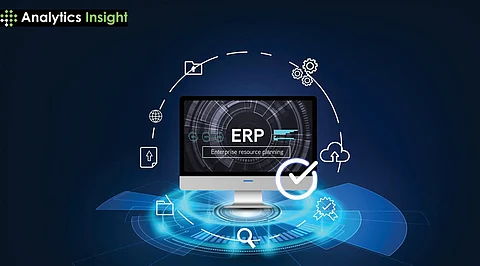

Enterprise Resource Planning (ERP) is a category of business management software designed to integrate and automate core business processes across various departments within an organization. It provides a centralized system for managing functions such as finance, human resources, manufacturing, supply chain management, sales, and procurement. ERP systems use a common database to collect, store, manage, and interpret data from multiple business activities, facilitating real-time insights and efficient decision-making.
Description: Installed and managed on a company's own servers.
Advantages: Full control over customization and data security, suitable for industries with strict compliance regulations.
Disadvantages: High initial costs, requires dedicated IT resources for maintenance and updates.
Description: Hosted on remote servers, accessed via the internet.
Advantages: Lower upfront costs, scalable, automatic updates managed by the vendor.
Disadvantages: Less control over data security compared to on-premise systems.
Description: Combines on-premise and cloud-based systems.
Advantages: Offers flexibility to choose deployment for each application, suitable for companies with both cloud and on-premise needs.
Description: Uses multiple cloud services from different vendors.
Advantages: Provides greater flexibility and redundancy in cloud services.
Description: Tailored to meet specific business requirements.
Advantages: Highly customizable, ideal for businesses with unique processes.
Description: Pre-built systems with basic functionalities.
Advantages: Cost-effective, quick implementation.
Description: Designed for specific industries with tailored features.
Advantages: Minimizes the need for customization, includes industry-specific best practices.
Description: Offers a broad range of functionalities across multiple industries.
Advantages: Economical, suitable for businesses with basic operations.
Description: Free or low-cost systems with community-driven development.
Advantages: Highly customizable, cost-effective.
Description: Used by companies undergoing significant operational changes, combining different ERP systems for different business units.
Description: Balances between customization and out-of-the-box functionality.
Advantages: Suitable for medium-sized businesses with complex needs.
Unifies Disparate Systems: ERP integrates multiple business functions into a single platform, eliminating the need for separate systems and reducing data inconsistencies.
Workflow Standardization: It standardizes processes across departments, reducing errors and improving operational consistency.
Streamlines Processes: ERP automates repetitive tasks, allowing employees to focus on strategic activities.
Improves Accuracy: By reducing manual data entry, ERP minimizes errors and increases accuracy in business operations.
Real-Time Data: Provides real-time access to business data, enabling informed decision-making and timely responses to market changes.
Enhanced Reporting: Offers comprehensive and accurate reporting, facilitating better planning and forecasting.
Cross-Functional Collaboration: Facilitates collaboration across departments, improving communication and productivity.
Better Customer Service: Enhances customer satisfaction through faster response times, improved order accuracy, and better access to customer information.
Cost Reduction: Helps manage inventory costs, improves procurement, and optimizes financial processes, leading to cost savings.
Scalability: Supports business growth by providing a scalable system that adapts to changing needs.
Risk Mitigation: Offers tools to predict and prevent risks, ensuring compliance with regulatory requirements.
Data Security: Provides robust data security measures, protecting business data from unauthorized access.
Inventory Management: ERP helps manage inventory levels, track stock movements, and optimize procurement processes.
Production Planning: Automates material requirements planning (MRP) to streamline production processes and reduce downtime.
Quality Control: Integrates quality checklists into production workflows to ensure compliance with industry standards.
Integrated Sales Channels: Manages both brick-and-mortar and e-commerce sales channels, providing consistent customer experiences and reducing cart abandonment rates.
Inventory Optimization: Helps retailers manage inventory across multiple locations, improving stock levels and reducing overstocking.
Asset Management: Tracks and manages capital assets, ensuring efficient maintenance and replacement planning.
Spare Parts Forecasting: Predicts spare parts needs to avoid stockouts during outages, enhancing customer service.
Inventory Turns: Improves inventory management to increase turns and reduce distribution costs.
Order-to-Cash Cycle: Streamlines the order fulfillment process, reducing the time from order receipt to payment.
Project Management: Tracks project profitability, resource utilization, and schedules to ensure timely service delivery.
Financial Management: Provides real-time financial insights to manage project costs and billing.
Automated Accounting: Integrates financial processes, automates currency conversions, and provides timely financial reporting.
Compliance: Ensures accurate financial records for regulatory compliance and stakeholder reporting.
Procurement: Manages supplier relationships, automates purchasing processes, and optimizes supply chain operations.
Logistics: Coordinates delivery of products and services to customers efficiently.
Customer Insights: Provides a centralized view of customer interactions, enhancing customer service and sales strategies.
Order Management: Streamlines order processing, improving customer satisfaction through faster and more accurate fulfillment.
Predictive Analytics: Uses AI and machine learning to analyze business data, providing real-time insights for strategic decision-making.
Performance Monitoring: Tracks key performance indicators (KPIs) across departments, enabling data-driven decision-making.
Common components include modules for finance, human resources, logistics and manufacturing, supply chain management, and customer relationship management.
ERP systems improve operational efficiency, enhance collaboration across departments, provide real-time data insights, and support strategic decision-making. They also help reduce costs by streamlining processes and improving resource allocation.
The main types are on-premise, cloud-based, and hybrid ERP systems. On-premise systems are installed locally, cloud-based systems are hosted remotely, and hybrid systems combine both models.
ERP integrates various business functions into a single system, automates repetitive tasks, and provides a centralized database for real-time data access. This integration enhances productivity, reduces errors, and facilitates better decision-making.
Key steps include mapping business processes to software capabilities, evaluating and selecting an appropriate ERP solution, creating a detailed implementation plan, training employees, and monitoring post-implementation performance.
Yes, most ERP systems can be customized to meet specific business needs. This allows companies to tailor the system to their unique processes and industry requirements.
Common challenges include high implementation costs, cultural resistance to change, and the need for careful planning to ensure effective integration with existing systems.
ERP systems can be tailored for specific industries, offering features such as materials planning in manufacturing or specialized records management in healthcare. This reduces the need for additional customization.
ERP systems provide robust data security measures and help ensure compliance with regulatory requirements by maintaining accurate financial records and tracking business operations transparently.
